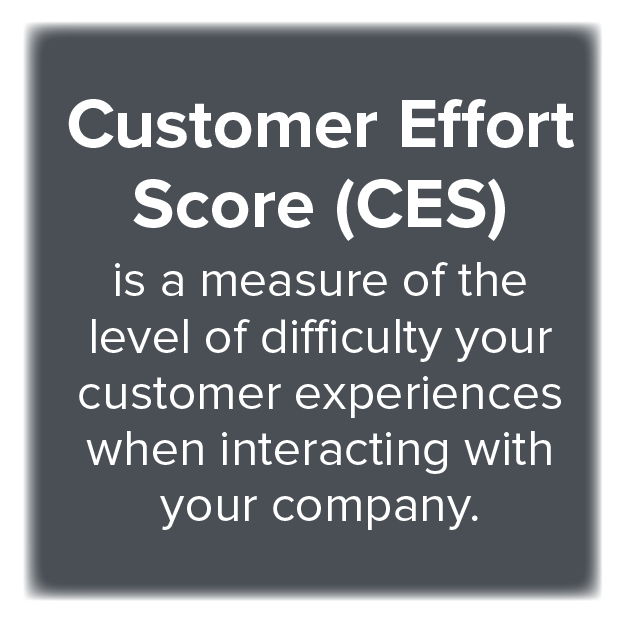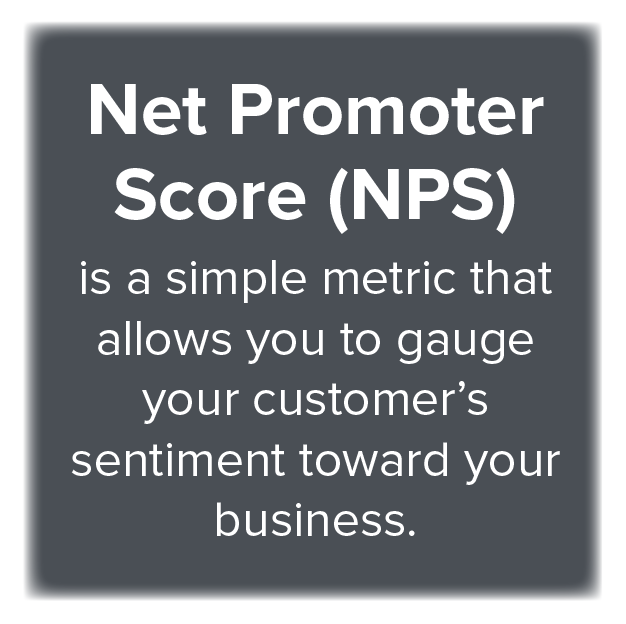"Using the surveys aligns with our core values of consistency, communication and courtesy. It allows us to hear valuable feedback from out clients that we use to improve our service and train our team. I highly recommend!"
Customer Satisfaction Survey
Customer Satisfaction Survey Options
A customer satisfaction survey is one of the most efficient ways to receive feedback from your customers. Because so many transactions occur online, there are limited (or sometimes non-existent) opportunities to create in-person relationships with customers. And even if you do collect feedback in-person, are you capturing it in a systematic way that allows your company to use it? Plus, some customers may not want to express their full opinions in-person for fear of a confrontation. An email-based customer satisfaction survey is a direct communication about their experience with your business and brand. Therefore, you should be using them to gather feedback.
If you’re going to use a customer satisfaction survey (and you should), do it right. Asking for feedback is one aspect, but acting on it is an even bigger one. If you genuinely want to know what your customers are thinking or feeling about your brand, and are committed to creating a long-lasting relationship with your customer, learn about each of these types of customer surveys and how/when to use them.
Gathering this information is just the beginning; what you do with the information is more powerful than the information itself. Your goal is to use this data to improve your business and increase the number of loyal customers to you and your brand.

Customer Satisfaction Survey (CSAT)
A Customer Satisfaction survey (CSAT) is a customer survey that captures their attitude toward the product or service they bought from you. If you’re thinking, ‘I provide great service, so all my customers must be satisfied!’ then think again. Just providing good customer service isn’t enough.
Measuring CSAT is like a snapshot of how a customer feels at a given time. CSAT is measured with customer survey questions in the form of open-ended questions, multiple choice questions, questions with a range from ‘Very Dissatisfied’ to ‘Very Satisfied,’ Yes/No questions, among others.
To calculate your CSAT score, you determine the percent of survey respondents who expressed positive satisfaction. For example, if your satisfaction question provides 5 choices from "Very Satisfied", "Satisfied", "Not Sure", "Unsatisfied" and "Very Unsatisfied", you would take the sum of respondents who answered "Very Satisfied" and "Satisfied", and divide it by the total number of respondents. Following that example, if you have 100 respondents to your satisfaction question, and 80 were either Very Satisfied or Satisfied, you have an 80% CSAT score.
CSAT not only allows you to measure customer satisfaction numerically on a scale, it can also provide rich, detailed feedback from your customers. Though CSAT is best measured on a sliding scale, you can also provide options for open ended feedback at the same time. Open ended feedback is formatted as a text box in which your customer can write about their experience with your brand. This type of open, free form feedback is critically important for your business. Positive feedback is helpful in promoting your brand. Positive feedback can be converted into reviews and can be posted directly by your customers on review websites such as Google and Facebook. You can also use their words as testimonials on your website, social media, and marketing materials. Negative feedback, however, can be even more useful than positive feedback. Hearing specifically what negative experience your customer has with your company allows you to understand what you can do to improve your business process..

Customer Effort Score (CES)
Customer Effort Score (CES) is a customer satisfaction survey that measures the level of difficulty your customer experiences when interacting with your company. It can refer to the ease with which they were able to complete their purchase, how easily they found resources they were looking for, or how quickly they were able to answer questions they had.
This type of survey is helpful for your business to discover the customer’s pain points in your processes. Without asking your customers, you might not know that there is a glitch in your online checkout, an unnecessary step in returning an item, or less-than-helpful customer service staff. Your customers know more about interacting with your company than you do! Identify which parts of your process you want to improve, use CES to evaluate your customer’s interaction, and use that information to improve your business. Listening to customer feedback (especially negative feedback!) is the best way to ensure positive customer experiences in the future, thereby leading to increased customer loyalty.

Customer Loyalty Survey or Net Promoter ScoreSM(NPS®) Survey
Unlike CSAT, which is like a snapshot of how your customer base feels about you at any given time, customer loyalty is your customer’s ongoing behavior to continue purchasing from you. Measuring customer loyalty is more of a long term look at the value of your customers. It is related to a customer satisfaction survey (CSAT), but different. Typically, satisfied customers are more likely to be loyal, but just because they had a good experience once doesn’t mean they are magically going to buy from you from now on.
Regardless of your industry, one of the best ways to measure customer loyalty is to regularly measure your Net Promoter Score (NPS). NPS is a simple metric that allows you to gauge your customer’s sentiment, or emotional connection, with your business. It is calculated by asking one question: How likely is it that you would recommend our company to friends and colleagues? The customer is presented with a scale from negative sentiment to positive. There are various scale options, but the most popular scale presents choices from 0 to 10 (0 being very unlikely and 10 being very likely). Those who answer 0-6 are considered ‘Detractors,’ people who do not feel they could recommend your business to others. Scores of 7-8 are ‘Passive’ or on the fence. The happiest, most satisfied customers who score 9-10 are considered ‘Promoters.’ Promoters are your biggest fans, are highly engaged with you brand, and would easily promote you to others.
It’s what happens after the sale that turns one-time customers into repeat customers. Loyalty is an ongoing customer experience decision - you must decide to actively engage your highly satisfied customers, even after they have completed their purchase. Following up with customers to let them know about additional products you offer, letting them be the first to know about new product launches, and listening to their feedback are good jumping-off points to creating lasting customer loyalty.

How to Conduct a Customer Satisfaction Survey
So, you know which metrics you want to measure in order to meet your business goals, but how do you collect and monitor the results? There are many types of customer loyalty software that are built to help businesses collect customer feedback and measure Customer Satisfaction (CSAT), Customer Effort Score (CES), and Net Promoter Score (NPS).
LoyaltyLoop’s customer loyalty software is comprised of an all-in-one dashboard that integrates with your business data to allow you to automatically send out customer surveys based on your goals. The software tracks every response from your customer, without you having to ask each customer individually to complete the survey.
Because LoyaltyLoop keeps track of everything for you, you can get an overall sense of your customer’s feelings about your business, while having the ability to hone-in on individual customer responses. This flexibility allows you to remedy poor experiences, reward repeat customers, and improve your business to plan for increased customer loyalty over time.
